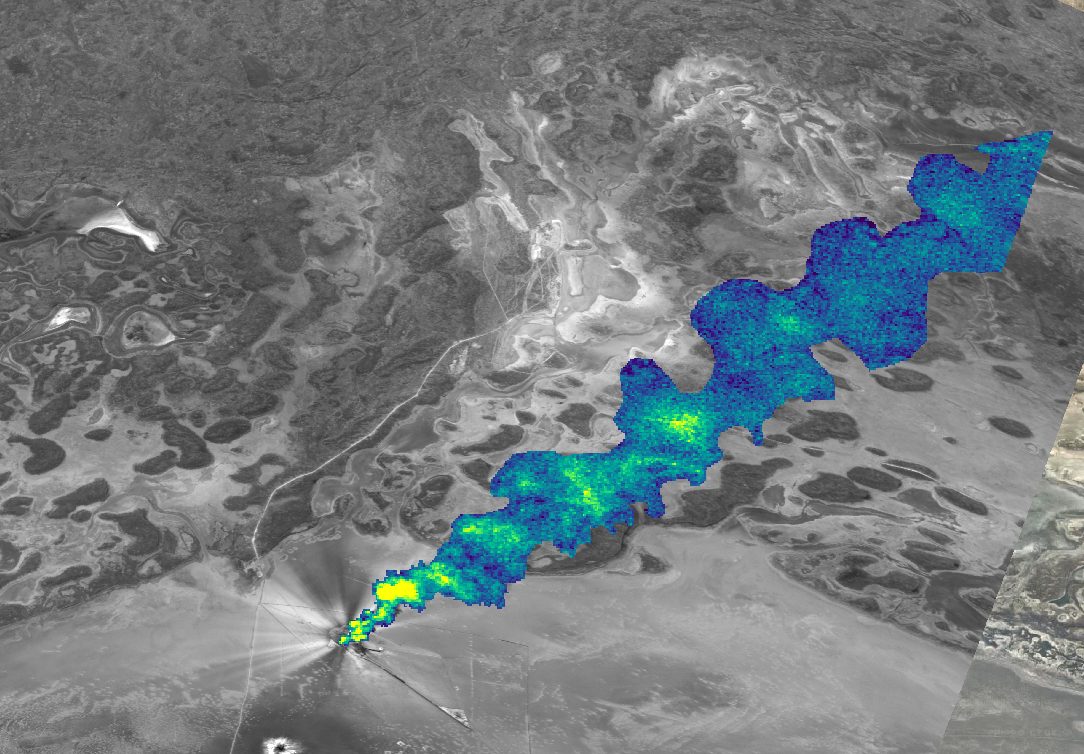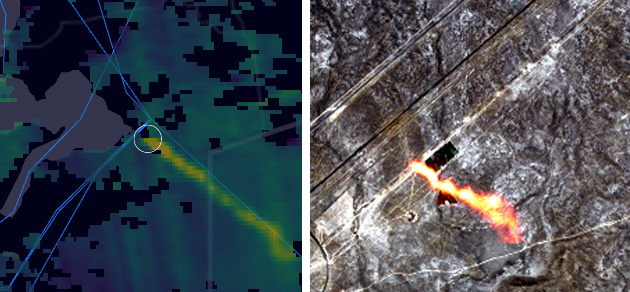Methane Crisis Unfolds in Kazakhstan’s Gas Field Causing Climate Concerns

Scientists report a massive methane leak following a natural gas well rupture in a distant region of Kazakhstan, highlighting the potential dangers associated with fossil fuel exploration.
Kayrros SAS, a French geoanalytics company, noted that satellite imagery had captured enormous clouds of methane escaping from the site on at least nine occasions during from the beginning of July through July 23rd. These findings were widely supported by scientists from SRON Netherlands Institute for Space Research.
Buzachi Neft LLP, the Kazakh exploration company developing the well and based in Almaty, acknowledged in an emailed statement on Aug. 1 that an incident occurred at exploration well No. 303 in the Karaturun Vostochny gas field in eastern Kazakhstan on June 9. They added that the site has been aflame consistently since the incident. The company, however, suggested that the satellite imagery probably depicts hot vapor clouds with negligible methane content.
Huge methane clouds were detected by satellites from the site in June and July, according to Kayrros. The Kazakhstan Ministry of Energy remained silent in response to requests for comment. Scientists who rely on satellite data to track greenhouse gas (GHG) emissions contradicted Buzachi Neft’s evaluation. “It is extremely unlikely to mistake water vapour for methane on multiple images captured by two hyperspectral satellites, whose very high spectral resolution leaves little doubt about the nature of the gas observed,” Kayrros said in a statement. Hyperspectral satellites collect data across the electromagnetic spectrum.

The images above show methane hotspots over a gas pipeline in Kazakhstan detected by the European Space Agency (ESA) Copernicus Sentinel-5P mission (left) and Copernicus Sentinel-2 mission (right). The Sentinel-5P’s spectrometer was specifically designed to detect methane.
The Italian Space Agency (ASI) has also detected the plumes with its PRISMA hyperspectral satellite.
While Buzachi Neft suggested the fire was burning the leaking gas, satellites have previously noted significant methane plumes originating from blowouts and even specialized flare stacks that mix the fuel with oxygen to transform the gas into carbon dioxide.
Kazakhstan’s Climate Exploration Catastrophe Singlehandedly Amplifies Climate Change
Kayrros estimated that emission rates from the site could be between 35 and 107 metric tons of methane per hour. If accurate, this means that since June 9, the methane continuously emitted from this site is equivalent to the yearly emissions of 814,000 to 2.49 million U.S. cars. Kayrros deemed it likely the worst single-source methane leak this year.
Methane is the primary element of natural gas and is incredibly detrimental to the climate due to its warming potential, which is more than 80 times that of carbon dioxide over its first 20 years in the Earth’s atmosphere.
The European Union and the U.S. are currently working on rules intended to limit methane emissions, and around 150 countries have joined the Global Methane Pledge, aspiring to cut global methane emissions by 30% by the end of this decade.
Buzachi Neft is working with several companies and the Ministry of Emergency Situations to seal the leak. The firm plans to flood the blowout with water to stop the gas flow and seal it off. This operation is slated for completion by September 1.
Source: Bloomberg
Popular Now
hub.cleanearth.io Media
Sign Up for the hub.cleanearth.io weekly newsletter
Our biggest stories delivered to your inbox weekly.
By signing up you agree to our Disclaimer, our Privacy Policy & Cookie Statement and to receive marketing and account-related emails from hub.cleanearth.io. You can unsubscribe at any time.







